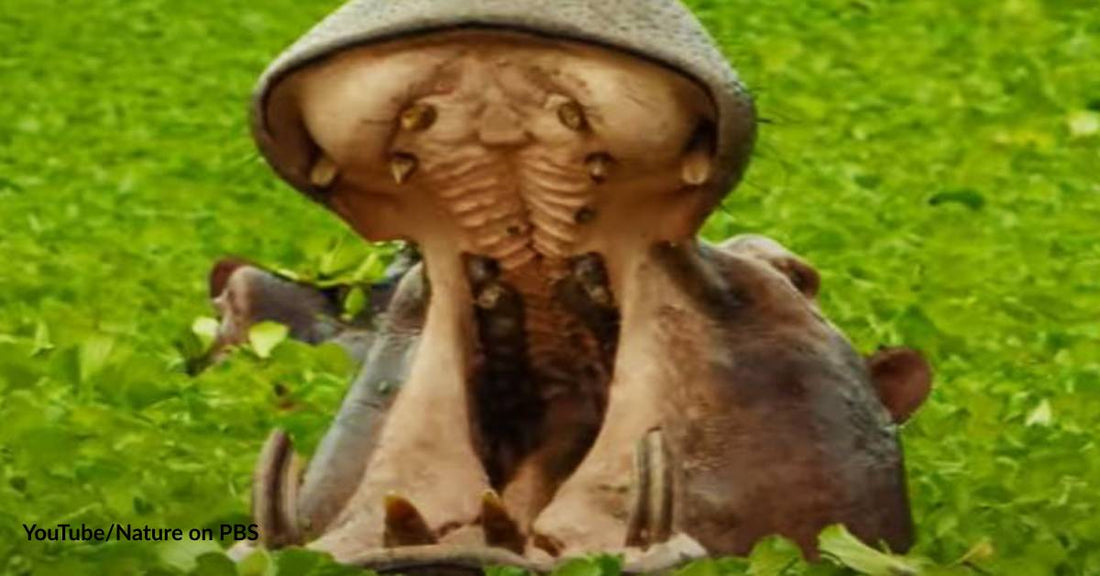Poachers Now Hunt Hippos for Their Teeth in Place of Elephant Ivory
Doris de Luna
"It has no intrinsic value, but its cultural uses make ivory highly prized. In Africa, it has been a status symbol for millennia because it comes from elephants, a highly respected animal, and because it is fairly easy to carve into works of art," according to the Smithsonian magazine in an answer to a reader's question about what makes ivory so precious.
Yes, since the time of the Roman empire, elephant ivory was highly in-demand for the production of decorative items, jewelry, and religious art objects. But, in the 4th century, after exploiting these giants for entertainment, war, and ivory purposes, which resulted in their population being pushed to the edge of extinction, there was a lull in the ivory trade for several centuries.
 Photo: YouTube/Nature on PBS
Photo: YouTube/Nature on PBSBut the passion for ivory did reawaken in the 8th century, with traders transporting elephant tusks from West and East Africa to the northern and northeastern regions of the continent and the Middle East. From the market cities, ivory was shipped to Europe via the Mediterranean trade routes.
The obsession with ivory intensified during the Age of Discovery, when European explorers reached Africa. Native hunters killed more and more elephants to meet the demand, moving inland as the number of elephants along the coastal areas diminished. Inland hunting likewise increased the demand for slaves, who were more resilient than animals in the transport of elephant tusks.
And so, from 26 million African elephants in 1800, only about 1 million remained in 1989.
 Photo: YouTube/Nature on PBS
Photo: YouTube/Nature on PBSHaving realized how humans have exploited elephants to the point of them almost disappearing forever, the United Nations and governments around the world formulated laws and policies to protect these gentle giants. Bans on the elephant ivory trade were declared and enforced, and wars against poachers were carried out.
Those efforts continue up to this day with victories and failures on the side of wildlife authorities as wildlife trafficking and illegal trade persist.
And this time, another headache is added to the burden of those who are fighting for the sake of African elephants. Now, poachers are hunting hippos for their ivory teeth!
 Photo: YouTube/Nature on PBS
Photo: YouTube/Nature on PBSHippo teeth are harder than an elephant tusk, which makes them difficult to carve. Also, in terms of length, a tusk can measure up to 2 meters, while a hippo's lower canine tooth is only up to 50 centimeters or one and a half feet.
Based on the 2016 study by the International Union for Conservation of Nature, there's been a 30% drop in the population of hippos since 1994. However, the trade of hippo body parts remains allowed.
Ten countries in West and Central Africa wanted a ban on this trade or at least an annotation in the Convention on International Trade in Endangered Species of Wild Flora and Fauna (CITES). But the European Union and countries in South and East Africa were against this, claiming that the hippo population is still healthy.
Learn more in the video below.
https://www.youtube.com/watch?v=A9duV0g7ppE


